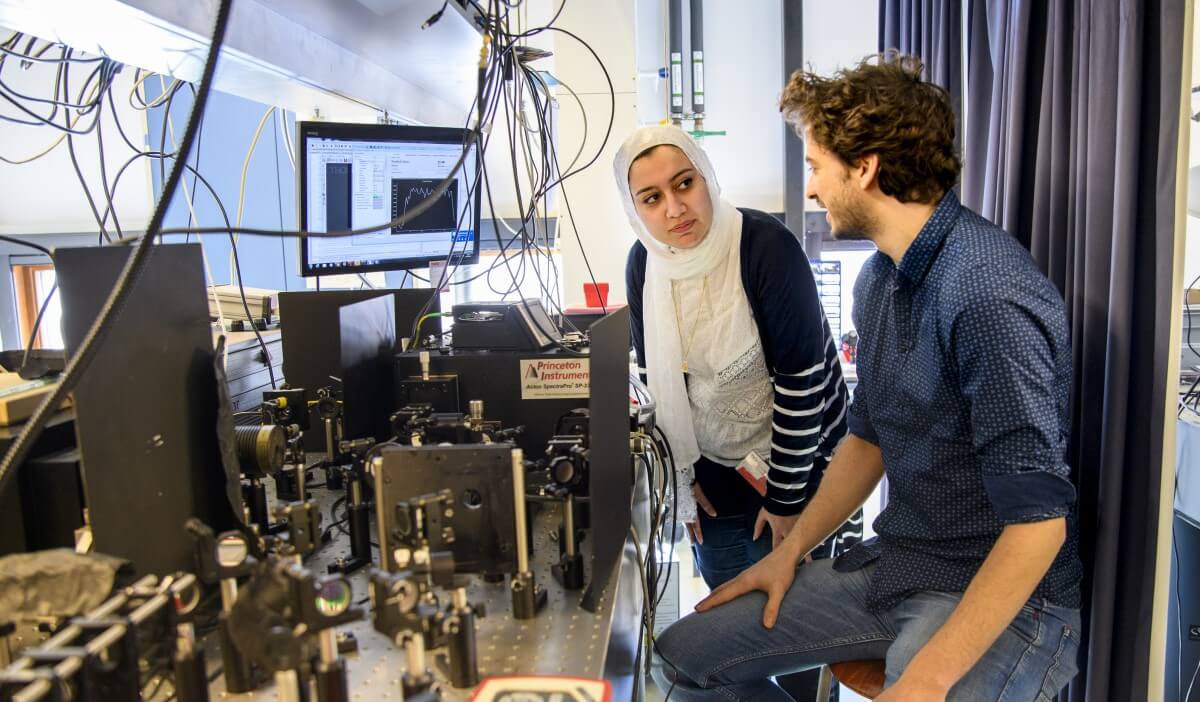Mar. 02, 2021
The 2020 Breakthrough of the Year goes to Elham Fadaly, Alain Dijkstra and Erik Bakkers at Eindhoven University of Technology in the Netherlands, Jens Renè Suckert at Friedrich-Schiller-Universität Jena in Germany and an international team for creating a silicon-based material with a direct band gap that emits light at wavelengths used for optical telecommunications.
Nine other achievements are highly commended in our Top 10 Breakthroughs of 2020.

Silicon sees the light: Elham Fadaly (left) and Alain Dijkstra in their Eindhoven lab. (Courtesy: Sicco van Grieken/SURF)
It is no exaggeration to say that finding a silicon-based material that emits useful light has been the Holy Grail of optoelectronics. Normally, silicon has an indirect electronic band gap, which means that it does not emit light. As a result, silicon must be integrated with other direct-band-gap semiconductor materials to create the optoelectronic devices that supply the pulses of light that drive information on the Internet. While this integration is possible, it is difficult and expensive.
To create a direct band gap, Bakkers and colleagues had to find a way of growing crystals of silicon-germanium alloy with a hexagonal crystal structure, rather than the usual diamond-like structure. They did this by creating nanowires of the alloy, which emitted infrared light. As well as having applications in optical telecoms and optical computing, the new silicon-based material could be used to create chemical sensors.
However, as Bakkers points out in the above audio interview, there is more work to be done before the material can be used in practical devices. In particular, the team will have to work out how to get the material to grow on flat surfaces, rather than as nanowires, so that it can be used in large-scale semiconductor processing.
Bakkers expects that the team will soon be able to create a silicon-based laser. Ultimately, he hopes that the material could be used to fabricate lasers on a chip that can create optical signals. Other components that are needed to convert optical signals into electronic signals and vice versa could also be made, including optical amplifiers and detectors.
Indeed, the breakthrough could lead to a new world of opportunities for silicon devices.



